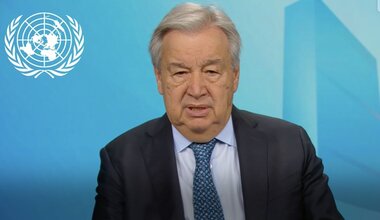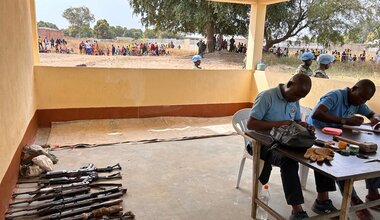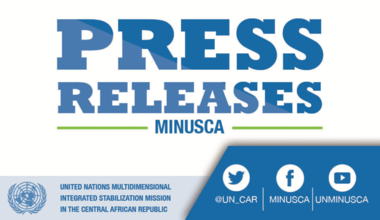Transhumance preparedness underway
Transhumance is a centuries-old practice in Central Africa – with livestock farming a vital livelihood that accounts for about 13% percent of the country’s GDP contributions. Livestock farming is, however, also a cause of violence and conflict in several localities in the country. Minor disagreements between livestock and farming communities, usually as a result of damage to crops by cattle, frequently cause substantial inter-communal violence, amplified by the cattle theft and retaliation.
With the December 2019 – May 2020 transhumance season underway, MINUSCA, the Food and Agriculture Organization (FAO) and International Organization for Migration (IOM) in the Central African Republic met to draw out a transhumance preparedness plan – with a focus on a situational analysis of transhumance incidents, the security dynamics of transhumance as well as advocacy for management of transhumance.
“A harmonized approach and response plan with all actors, especially the Government of the Central African Republic, will help prevent and reduce the number of incidents of physical and sexual violence associated with transhumance,” said Denise Brown, the MINUSCA Deputy Special Representative of the Secretary-General and UN Resident and Humanitarian Coordinator.
Competition for the exploitation of resources is a source of attacks and reprisal killings among farmer and herder communities, especially in the west of CAR. Livestock is, moreover, a significant source of income for several armed groups that are engaged in theft and extortion through illegal taxation and control of certain transhumance corridors. The prefectures of Haute-Kotto, Ouham and Ouham-Pende are particularly affected by the incidents reported to date – but with over 75 percent of the country’s population employed by both agriculture and cattle breeding, the issue is one of national concern.
Mapping of transhumance zones is helping to shape preparedness efforts. A FAO “project to restore peace and dialogue between communities affected by cross-border transhumance in Central Africa and Chad” is also a key element of such efforts. Focus areas include developing methods for collecting data on pastoral mobility, dialogue with agropastoral communities on managing transhumance, information and awareness-raising campaigns on vaccination of livestock as well as on transhumance and gender-based violence (GBV), activating community mediation committees as well as surveillance committees on GBV and mechanisms for pursuing justice to stop the culture of impunity.
Response will also extend to identifying priorities for rehabilitation or establishment of pastoral infrastructure.
 UN
UN United Nations Peacekeeping
United Nations Peacekeeping





